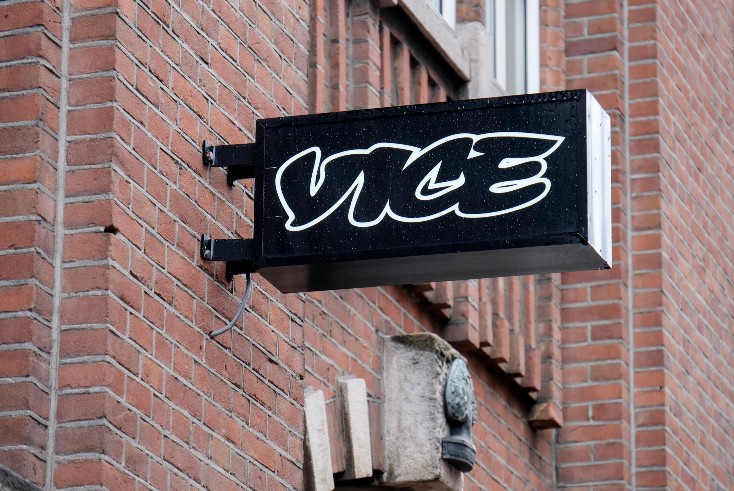What can Vice tell us about heritage media?

Opinion
Rather than schadenfreude at the fate of Vice News, traditional media and advertisers should take key lessons from its trajectory.
There was a time when the likes of Vice News and BuzzFeed seemed like the future of news, if not the future of the media itself.
The start-ups providing news and entertainment were the new kids on the block and they were seen, with valuations to match, as the way to reach new generations of digital savvy young consumers difficult if not impossible for traditional, certainly print media, to reach.
Rupert Murdoch personally visited Vice to wonder at the new phenomena and put in an instant $70m to get a slice of the future action.
By implication the heritage media was meant to quake before these new exciting creations that would eventually inherit the earth.
In London media types flocked to conferences to hear the latest pronouncements of Vice’s colourful co-founder Shane Smith, who unusually for the latest digital media start-ups, had a deeper media heritage of his own. With partners Gavin McInnes and Suroosh Alvi, Smith launched a cult magazine Voice of Montreal in 1994 — a business that eventually became Vice Media.
By any standards, Vice was an innovative success with offices in 30 countries and five years ago was worth $5.7bn (£4.5bn).
Earlier this week, Vice Media filed for protection against bankruptcy to give it time to restructure in the hope of carrying on and building the company back again. The company is now effectively being bought by its lenders for around $225m, while $20m is being provided to cover the period of the sale.
The company said the deal would “safeguard the kind of authentic journalism and content creation that makes Vice such a trusted brand for young people.”
Alas, as often happens in the Darwinian world of online platforms aimed at the young, fashion is a powerful player and many of those young users have already legged it to TikTok.
In a sign of what was to come, last month Vice announced job losses after closing down its main TV programme. Similarly, BuzzFeed said it was shutting down its news operation with around 15% of its overall workforce losing their jobs.
Rather tellingly, the head of technology at Enders Analysis, Joseph Teasdale, told the BBC: “The issue with Vice and all similar websites is that they never really worked out a business model for free online journalism.”
The endurance and adaptability of media
There should be no schadenfreude from the traditional media at the prospect of young, smart, pioneering journalists potentially losing their jobs. They might want to hire some of them.
But it must surely be permitted to make one very obvious point. To a remarkable extent the heritage media — some of them from an recognisably historic era — have in the main endured.
‘Unhealthy dependency’: Why are digital media companies faltering?
They were nearly strangled by the rise of online. They were slow to adapt and many had delusions that the internet might somehow go away. But they did adapt and survive, although in the case of the local and regional press too much of the journalism has been hollowed out as a result.
Murdoch once predicted that by the year 2000 there would only be two national newspapers left in the UK, one that sounded a bit like The Times and the other The Sun. In fact, all the UK’s national newspapers, have survived, complete with print editions, apart from The Independent, which had little choice but to sacrifice the continuing impact of print for an online profitable path.
In the end others may follow but it is still remarkable that, as of now, we still retain our full set of national newspapers and newsbrands.
Over time the trick has been for publications such as The New York Times, The Times and the Financial Times to provide journalism that people will pay for and drive subscriptions, together with a surrounding array of related offerings.
The popular publications have gone for online volume and, with varying degrees of success, have attracted online advertising. They all had brands to build on rather than the lonely business of starting up from scratch.
Yet original journalism is expensive and money remains tight.
Two suggestions for publishers in future
By a curious coincidence, only a day after the Vice announcement, there came two suggestions that could help from two newsbrand marketing organisations — one from Newsworks and the other from the News Media Association (NMA).
NMA produced research by Professor Annabelle Gawer, director of the Surrey Centre of Digital Economy, suggesting that Google was contributing far less to news organisations than it should. According to Prof Gawer while the news sector is estimated to drive up to £850m in revenue to the tech giant, less than £75m came by way of return. Gawer further argued that Google’s claims of a much higher figure were “disingenuous” because they were based on out-of date research.
The Gawer paper backs up NMA arguments that for years publishers have been forced to accept unfair and unequal payment terms from the tech platforms. The Surrey academic argues that news websites’ own apps were now driving an increasing proportion of traffic with referrals from Google now contributing at most £140m a year. Gawer found that many users were simply entering the news publisher’s name in the search bar, which meant that Google was contributing little for its gains.
Clearly the battle to redress the imbalance could continue and be intensified.
Also yesterday Newsworks produced new research on how a trusted hard news environment can boost marketing campaigns.
Newsworks claims that marketing campaigns that use news brands are 74% more likely to deliver market share growth. The industry marketing group adds that newsbrands “are champions of truth and fairness” — alas some more than others — and as a result newsbrands increase “the trust effects” of online video by 80%.
Don’t write trust in media off as ‘wokery’, warns Peter Field
If that was not enough, Newsworks claims that engagement is 50% higher on premium editorial sites than in general free browsing.
And moreover “adding newspaper readership to a predictive model of people’s attitudes to politics, risk, and success makes it 1.8 times as effective as using demographics only.”
Hidden in those sentences there must be some useful truth just as it is equally clear that the tech billionaires will have to contribute more to the production of original news in future.
It would also be nice if Vice Media manages to rise again like a phoenix from the ashes.
 Raymond Snoddy is a media consultant, national newspaper columnist and former presenter of NewsWatch on BBC News. He writes for The Media Leader on Wednesdays — read his column here.
Raymond Snoddy is a media consultant, national newspaper columnist and former presenter of NewsWatch on BBC News. He writes for The Media Leader on Wednesdays — read his column here.



